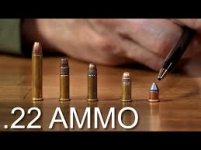When was that transition?
Or, conversely, should one that shipped in August 1929, serial number 501470 be fired only with standard velocity ammunition or is high velocity an acceptable choice?
The transition was about this time frame, but I cannot recall exactly when.
Or, conversely, should one that shipped in August 1929, serial number 501470 be fired only with standard velocity ammunition or is high velocity an acceptable choice?
The transition was about this time frame, but I cannot recall exactly when.

